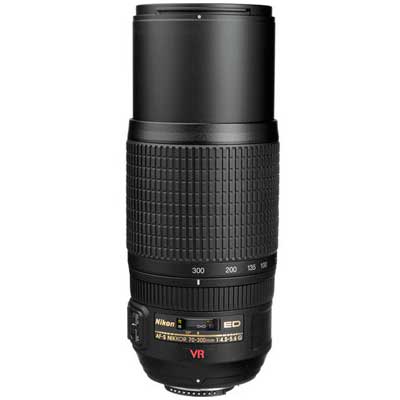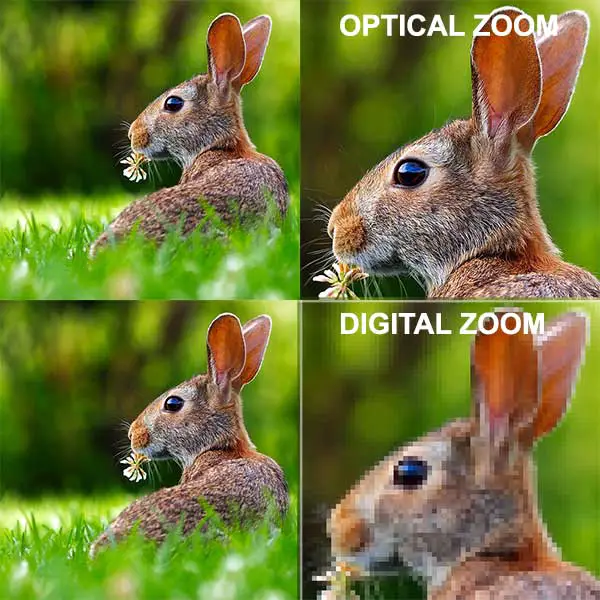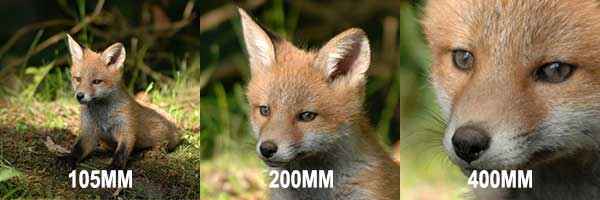INTRODUCTION
SAME BUT DIFFERENT
Welcome to a guide on the difference between digital and optical zoom. Zoom is one of the most commonly used functions and it is something that we all use without asking too many questions – That was the same with me as a beginner, and it was not until much later that I realized the existence of “digital zoom” and “optical zoom”.
Those two terms remained as one of the biggest mysteries, and I kind of just ignored it. I mean, zoom is zoom, who cares about the technical stuff if it works? Why is there a need to differentiate between “optical zoom” and “digital zoom” anyway? Both of them simply magnifies, right?
Turns out that I was correct about the “magnification” part, but these two zooms are completely different creatures. As I slowly picked up photography, I also realized the importance to understand both of them – Read on to find out why!
WHAT IS OPTICAL ZOOM?

Optical zoom refers to actually using the zoom mechanism on the physical lens itself. No digital processing and gimmicks are done, and thus, it is rightfully called optical zoom. You can think of it as similar to using a pair of binoculars to zoom. But please take note that if you are using a prime lens (lens without zoom capability), then optical zoom is no longer possible.
WHAT IS DIGITAL ZOOM?

Digital zoom is not an “actual mechanical zoom”, but I will personally call it a “simulation of zoom”; Digital zoom works by enlarging a part of the picture, and not by physically zooming in with the lens.
This is a somewhat useful technique for devices with fixed prime lenses, in particular, smartphones that are way too small to put zoom lenses into. But the critical flaw with digital zoom is that excessive enlarging will result in a blurred image – The more you “digital zoom in”, the less image quality you will get.
OPTICAL ZOOM IS BETTER AND HERE’S WHY

Some of you guys are probably still confused as to why optical zoom is better, and why digital zoom is always on the losing end. So let me further illustrate this with an example of a 20-megapixel camera – The optical zoom will fill up the entire frame of 20-megapixels no matter how we zoom, while digital zoom will just pick out a part of it.
Let’s say that if we do a 200% digital zoom, that will result in using 10-megapixels for enlarging and stretching it to fit 20-megapixels. As you can expect, this enlarging process will result in an image of lesser quality. If we push this further, let’s say, a 1000% digital zoom, that will mean we are only using 2-megapixels and enlarging it 10 times… Yep, that will definitely give us an “artistic pixelated” image.
WHAT DOES THAT 4X OR 10X ZOOM MEAN?

Now that you have a basic understanding of how both zooms work, here is another mystery that I think is on the minds of many people – We often see the “impressive 100X” zoom that marketers use to promote their products, but just what does that mean, and how much distance is it?
To fully understand what the “how many times zoom” mean, you will first need to know one term about lenses – focal length. It is measured in millimeters (mm), and in the layman terms, it is “how far a lens can see”. As in the above example, a 400mm lens can see much further than a 105mm lens. Now, back to the “x-times zoom”. Follow up a little closer, because this is going to be a little confusing.
- Every zoom lens will have a range of focal lengths. If you scroll back up to the first image of a lens, you will see that it has a zoom range of 70-210mm.
- The “x-times zoom” is a ratio that depends on the minimal focal length of the lens.
- So for the above lens, it will be a 3X optical zoom lens (210 divided by 70).
- Now, we can take that one step further with digital zoom. Let us say that we have fully zoomed-in optically at 210mm, and digitally enlarge part of the image by 200%. That will now be a 2X digital zoom and a 6X total zoom.
So yep, some marketers abuse that to give you a false impression of a very “impressive” 100X zoom, but you should know by now that it is a gimmick. Because at 100X digital zoom, all you will get is a crappy pixelated image. In summary, the “x times zoom” is just a ratio. You should be looking at the focal length (mm) for the actual range of the lens instead.
HOW MUCH ZOOM IS GOOD FOR A DIGITAL CAMERA?
If you are wondering how much range is good while looking for a new lens or camera, my short answer will be – It depends on what you are shooting. Normally, it is all up to common sense. For example, you will want to have a wide-angle lens to capture more landscape and cityscape. If you love shooting wildlife, you will want to be far away and not end up as lunch for the animals. In general, this is the range that I will recommend:
- Landscape: About 16-35mm.
- Generic, street, portrait: 35-5omm.
- Portrait, food, macro: 50-135mm.
- Wildlife, sports: 200mm and above.
DIGITAL ZOOM VS RESOLUTION – WHY IT IS NOT REALLY THAT BAD
There are times where the optical zoom on the camera just won’t reach, is digital zoom a necessary evil in this case or should we avoid it at all costs? Thankfully with the improvement of technology, digital zoom is not-so-bad these days. Modern cameras are getting more megapixels, and the enlarging algorithm is getting better. Remember that digital zoom works by enlarging a part of the original image?
This means that the more megapixels a camera has, the more room we have to play around with digital zoom without losing too much quality. But keep in mind that there is still a limit to digital zoom, abuse it too much and you will still end up with a messy pixelated image; There is no way digital zoom can compare with optical zoom. So necessary evil – Yes, but do it sparingly.
MULTIPLE SMARTPHONE LENSES, KIND OF THE DIGITAL ZOOM SAVIOUR
Now that you know the difference between optical and digital zoom, this final section is just some trivial knowledge on the favorite modern-day camera device – smartphones. Ever wonder why there are “dual-lens” or even “trio lens” on smartphones these days? Remember that the quality of the digital zoom goes down as you magnify a part of an image?
Smartphones these days come with dual lenses to sort of reduce this problem – One lens will have a shorter focal length and the other longer. So with this dual-lens setup, the digital zoom will work with both lenses and average them out. While the basics of “enlarging part of the image” still remain in digital zoom, the dual-lens will provide more optical data, and thus, slightly improve the digital zoom quality.
THE SUMMARY, THE DIFFERENCES
| Optical Zoom | Digital Zoom |
| Works by bending light on the physical lens itself. | Enlarges a part of the image. |
| The zoom quality depends on the lens. | The zoom quality depends on the enlarging algorithm and resolution of the original image. |
| Zoom range limited by the lens. | “Extends” the optical zoom by enlarging a part of the picture. |
| Minimal or no quality loss on zoom since it is optical. | The more you zoom in, the more digital enlarging, the more pixilated and quality loss. |
LINKS & REFERENCES
We have come to the end of this guide, and here are a couple of links that may be useful to you:
- Optical vs. Digital Zoom: Why Digital Is No Longer a Dirty Word – Tom’s Guide
- The Difference between Optical Zoom and Digital Zoom on Your Digital Camera – Dummies
- Optical zoom vs digital zoom: understand your camera phone’s close-up potential – Techradar
CLOSING
OPTICAL ZOOM STILL WINS

Some people may say – Hey, there is nothing wrong with using digital zoom, and the quality of optical zoom will still depend on the lens. I totally agree with it, but as with the current level of technology, digital zoom is far from perfect. It will be wise to stick with a good zoom lens and not push digital zoom too far; Reserve digital zoom and cropping as the last resort, do it sparingly and only when you know what you are doing.
With that, I hope that this guide has answered your question on the differences between the two. If you have questions or some stuff to share, please feel free to comment below. Good luck and happy shooting!
